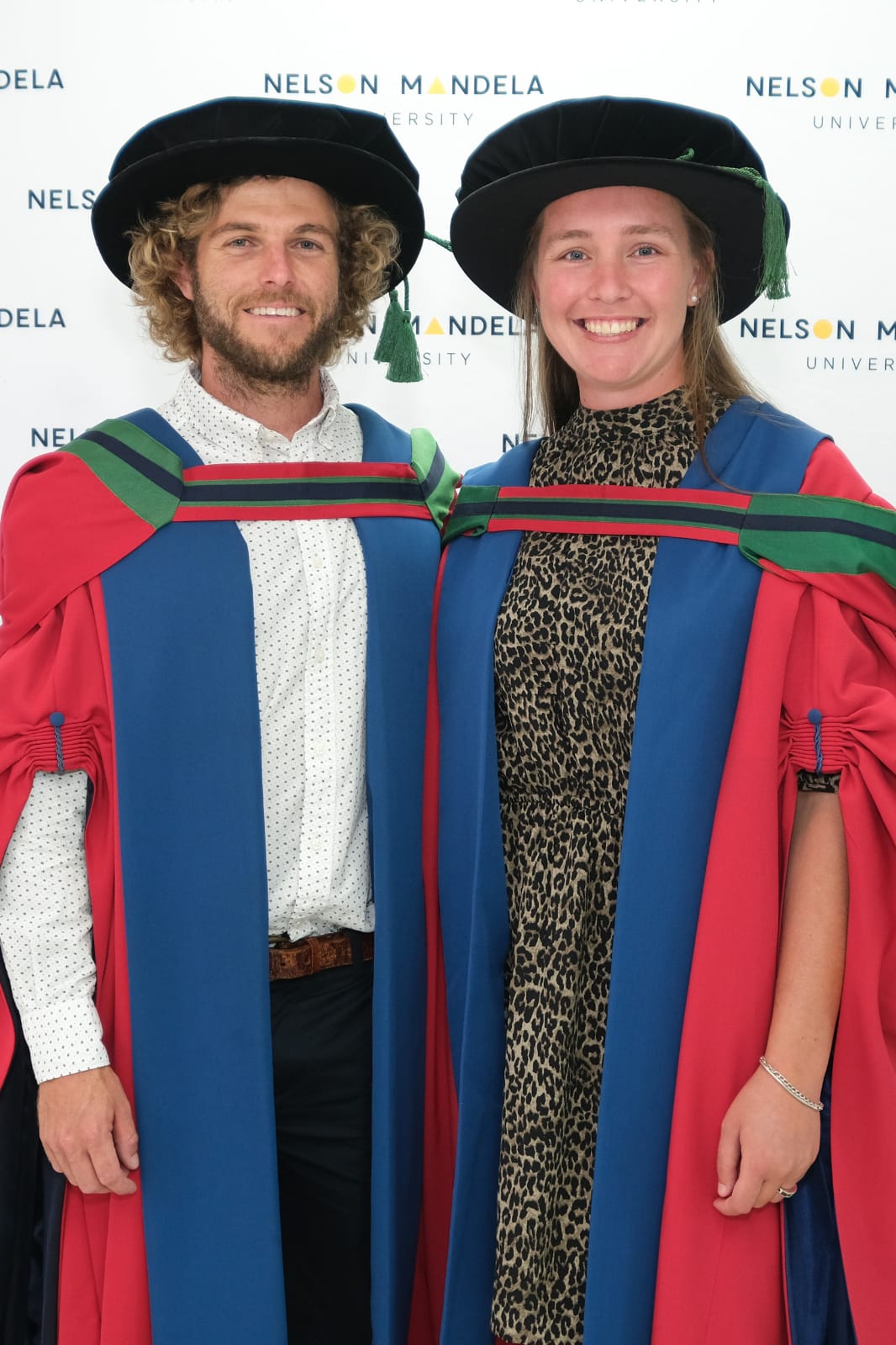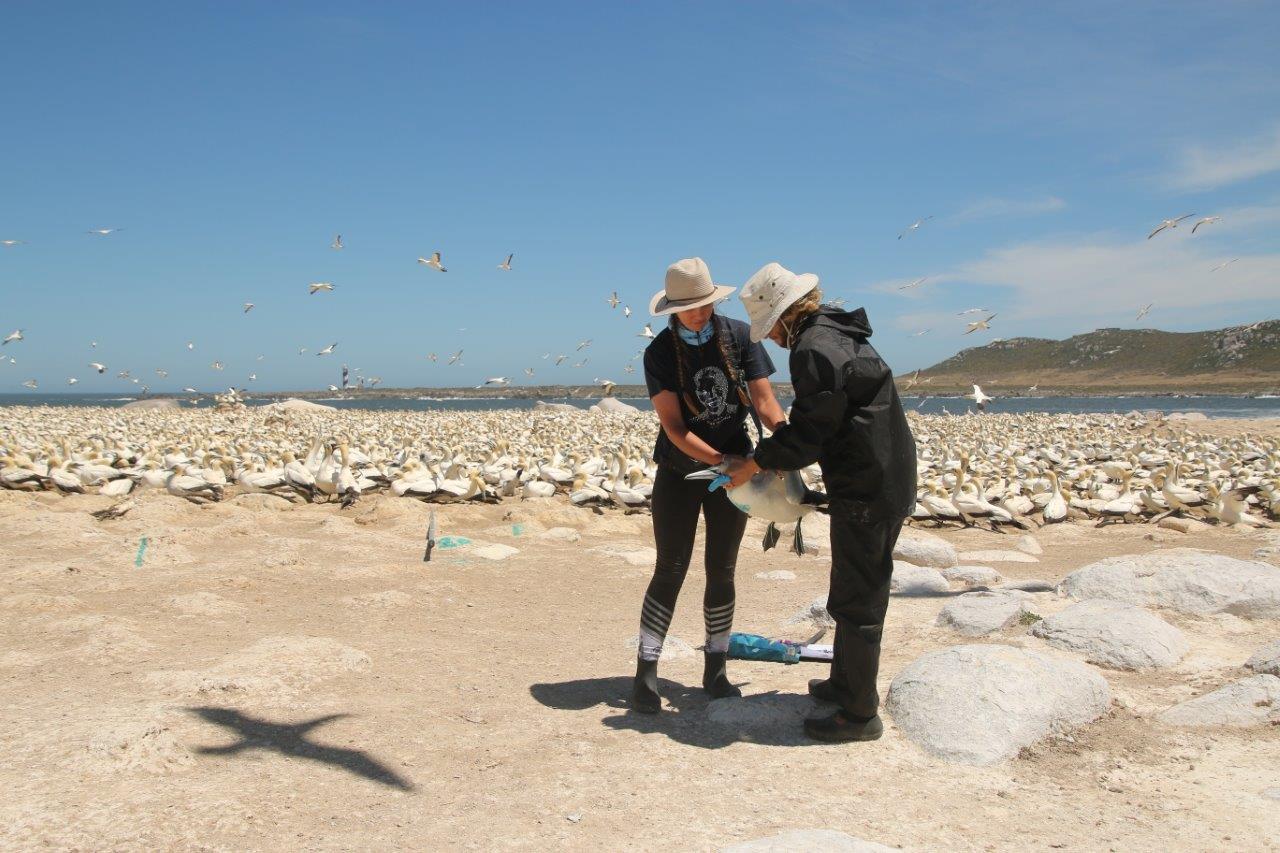GEORGE NEWS - Tiaan and Zanri Strydom will never forget their graduation day on Wednesday 13 December, when they both officially received their doctorate degrees in nature conservation.
The couple, both 29, met at the Nelson Mandela University George Campus as first-year students in 2013. "We fell in love in February that year," said Tiaan. They married in 2020 and finished their diploma, B-tech, Masters and PhD together. Zanri hails from Vredenburg on the West Coast, and Tiaan from Uitenhage in the east.
Although graduation day was this week, the couple finished their PhDs earlier this year.
They are currently both employed as the reserve managers of Dunefields Private Nature Reserve, which gives them an opportunity to acquire experience in management.
"The reserve is still in its infant stage and we are tasked with growing the conservation work, and ensuring this piece of paradise stays pristine and is protected for posterity," said Zanri.
Asked about their career aspirations and dream jobs, the couple said, "As a career (and also a lifestyle) we aspire to actively protect nature – whether it be through rescuing and stabilising wildlife in need, conducting research or raising environmental awareness through education. We are currently experiencing what it feels like to have a dream job.
"At Dunefields we get to protect a unique and near-pristine ecosystem which is located on the highest fossilised and vegetated sand dune in South Africa."
The titles of their theses are "Effects of fire on architecture and composition of canopy shrubs in subtropical dune thicket of the south-eastern Cape Floristic Region" (Tiaan); and "Assessing the effects of fish stock management on Cape gannet foraging behaviour in South Africa" (Zanri).
 Tiaan and Zanri at the NMU George Campus after officially becoming Doctors Tiaan and Zanri Strydom.
Tiaan and Zanri at the NMU George Campus after officially becoming Doctors Tiaan and Zanri Strydom.
Findings and contributions
The two doctors described their findings and explained what contribution their studies make to society.
Tiaan classified subtropical thicket shrubs and trees into architectural guilds, based on their structural traits (eg, stem size, number of stems, height and canopy size), something that has never been done before.
"I also found that the different levels of fire exposure (low: 100 years or more; moderate: 50 to 100 years; and high 10 to 50 years) determine the thicket species composition as well as the architectural guild composition, in the respective fire exposure levels," he said.
"Lastly, I showed the response of young thicket shrubs that experienced consecutive fires within five years, and how well they survive and resprout after fire. The findings have contributed toward science and management questions related to thicket."
 Zanri and Tiaan weigh a gannet before they fix a GPS to its back.
Zanri and Tiaan weigh a gannet before they fix a GPS to its back.
Zanri determined the influence of age and sex on energy expenditure in Cape gannets while feeding at sea.
In many marine species, bodily functions deteriorate with age (leading to hunting less efficiently, subsequently expending more energy while hunting), but senescence [the condition or process of deterioration with age] has never been studied in Cape gannets.
I found that female gannets older than 17 years expended significantly more energy while foraging compared with males of that age.
"This possible early onset of senescence in females makes them more vulnerable to a change in the distribution and abundance of fish.
"The findings brought about new information that allows for a better understanding of gannets’ vulnerability, and therefore allows for better planning and decision-making for the future persistence of gannet populations."
‘We bring you the latest Garden Route, Hessequa, Karoo news’
















